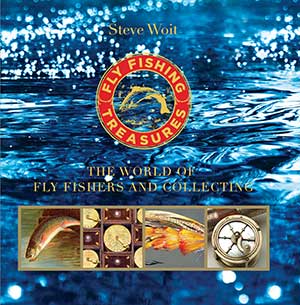Why Collect Antique Fly Fishing Tackle?
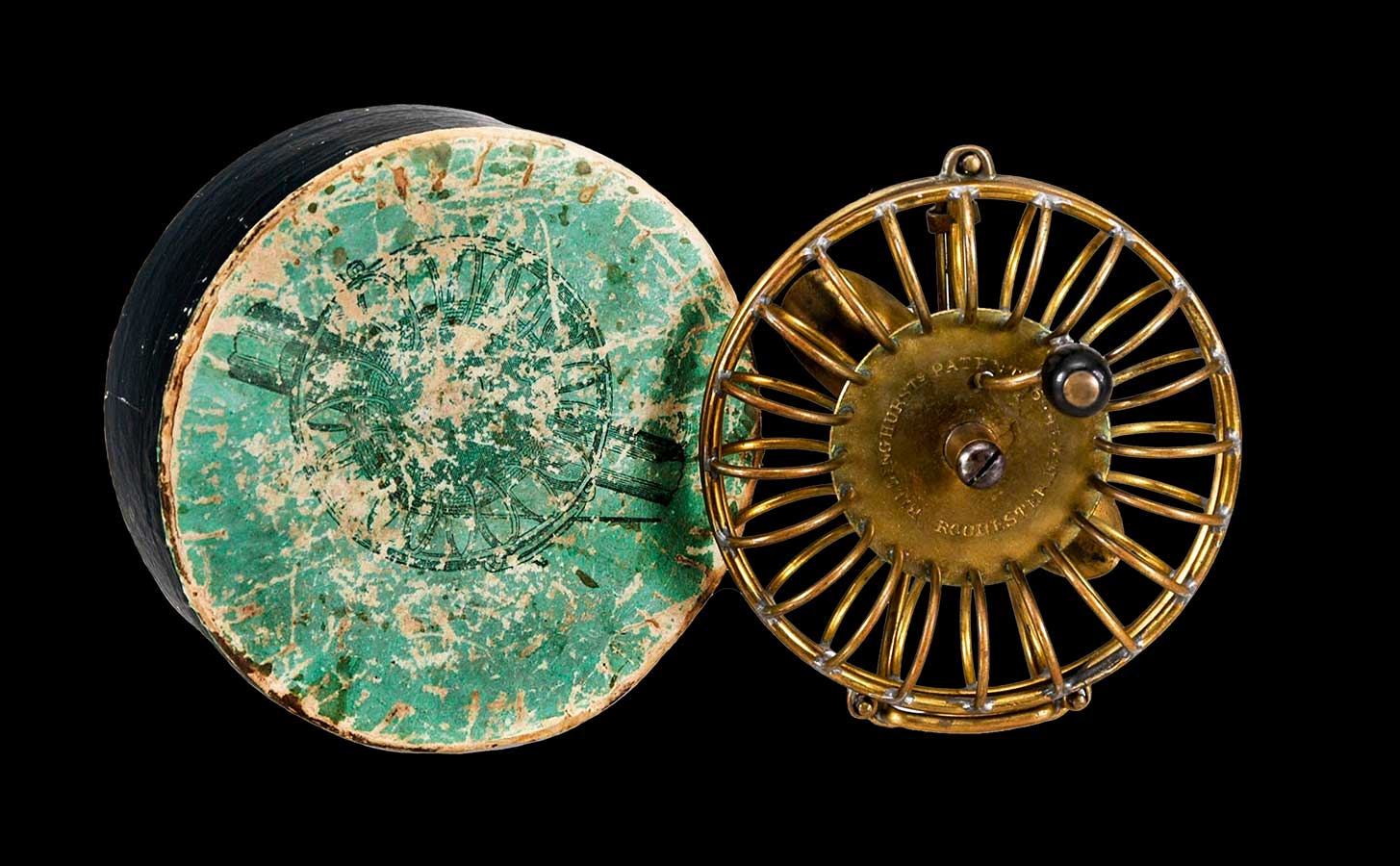
Billinghurst birdcage reel—Photo credit: Jim Schottenham
You may have a friend who collects vintage or antique fly fishing tackle, and you may sometimes wonder about them. Or you may have collected a favorite rod, reel, or some flies over the years that you are particularly fond of.
So, why do fly fishers collect all of this stuff?

Leonard rods and gun in canoe | photo by A. J. Campbell
One reason is that fly fishing has more equipment associated with it than any other sport. Fly fishing tackle craft has a long history of craftsmanship and innovation dating from the 18th or 19th century.
Fly fishers, like other collectors, become intimately attached to these objects, which are deeply imprinted with fond memories of times spent on their favorite rivers or lakes. They may also have shared this time with a parent or grandparent who may now be long gone.
These memories live on, often in the form of an obsession to possess rods, reels, flies and other gear that reminds us of the good times in the outdoors pursuing our sport.
Collectors also serve a very useful purpose in preserving the history of the sport, saving objects and know-how that would otherwise be lost. They relish telling each other stories about their latest finds—a rare rod, or a scarce reel or something that has been rarely seen before.
The wide availability of online bidding, online research tools and social media has turbocharged what was a somewhat obscure hobby. These tools also helped level the playing field so that all could participate in an activity that had been reserved for the wealthy or the elite.
In addition to eBay, there are specialized fishing tackle auction sites like Lang’s Auction and The Angling Marketplace.
Today, armed with just a bit of curiosity and knowledge, even a novice collector can enjoy finding a rare bamboo fly rod, or fly reel, early trout or salmon flies, or books and ephemera like catalogs and trade cards.
Some start out collecting a little bit of everything for their man cave or to put on the wall of a cabin or to remind them of time in the outdoors.
While finding a rare piece of tackle can be a lucrative event, it can be just as meaningful to find something that has great personal interest as well.
Collecting is also a fun and easy way to learn a bit about the history of the sport without reading a bunch of dusty books and journals. Listening to and sharing stories about the latest finds is also entertaining and there are some real colorful characters involved in the collecting community.
So what can be learned?
Well, you might not know that many of the early fly rod makers were also gunsmiths, who began making fishing tackle with the availability of more leisure time for sports.
To this day, there are literally hundreds of rod makers using old and new techniques to develop the best tapers for their bamboo rods, to add new features and to take the craft forward for the benefit of all fly fishers.
Fly reels are fascinating mechanical contraptions with a whole host of parts and features that have evolved over hundreds of years, as reel makers and engineers sought to improve their performance. They went from simply holding line to helping to play the fish on the line in motion.
You might also be interested to know that some of the earliest, clever American fly reels looked like birdcages, like the Billinghurst birdcage reel from the mid-1800s, which were side-mounted on the rod (photo at top of page).
The first really popular American fly reel that was mounted vertically on the rod was the classic Orvis Fly Reel from the 1870’s. You might also be interested to hear that the reel also was produced in a special gold-plated version for prizes, presumably for fishing tournaments in 1876.
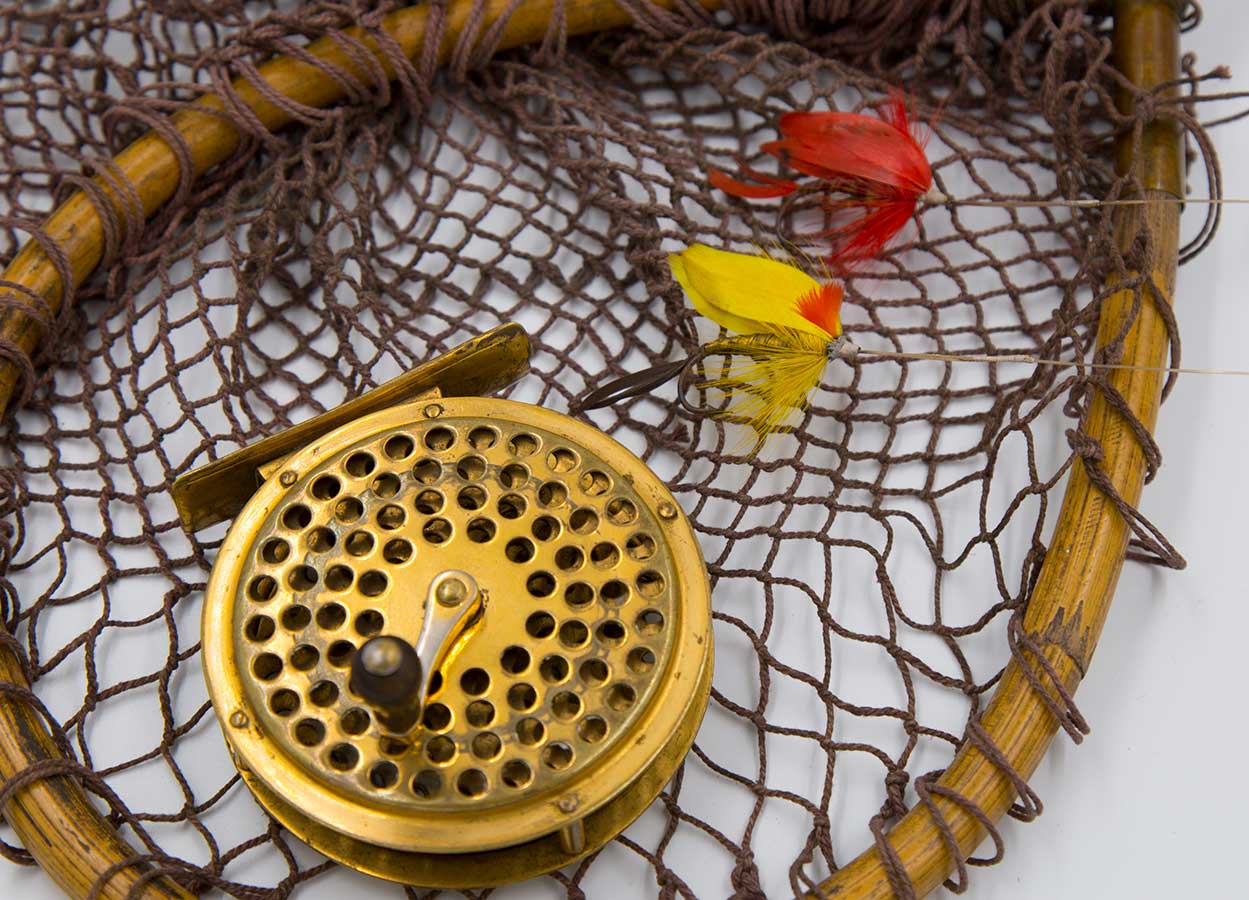
Gold-Plated Orvis Reel from 1876 | photo by Steve Woit, from Fly Fishing Treasures book
A collector found this gold-plated reel online and only two examples have ever been located.
Now, how about collecting a few antique salmon flies to put on your wall? Salmon flies are particularly beautiful example of fly fishing and fly tying craft, fashioned with the features of exotic birds during Victorian days.
You might also be surprised to know that one of the most famous fly tiers in the world is a woman: Megan Boyd of Brora, Scotland, now gone, who tied well into her 80s.
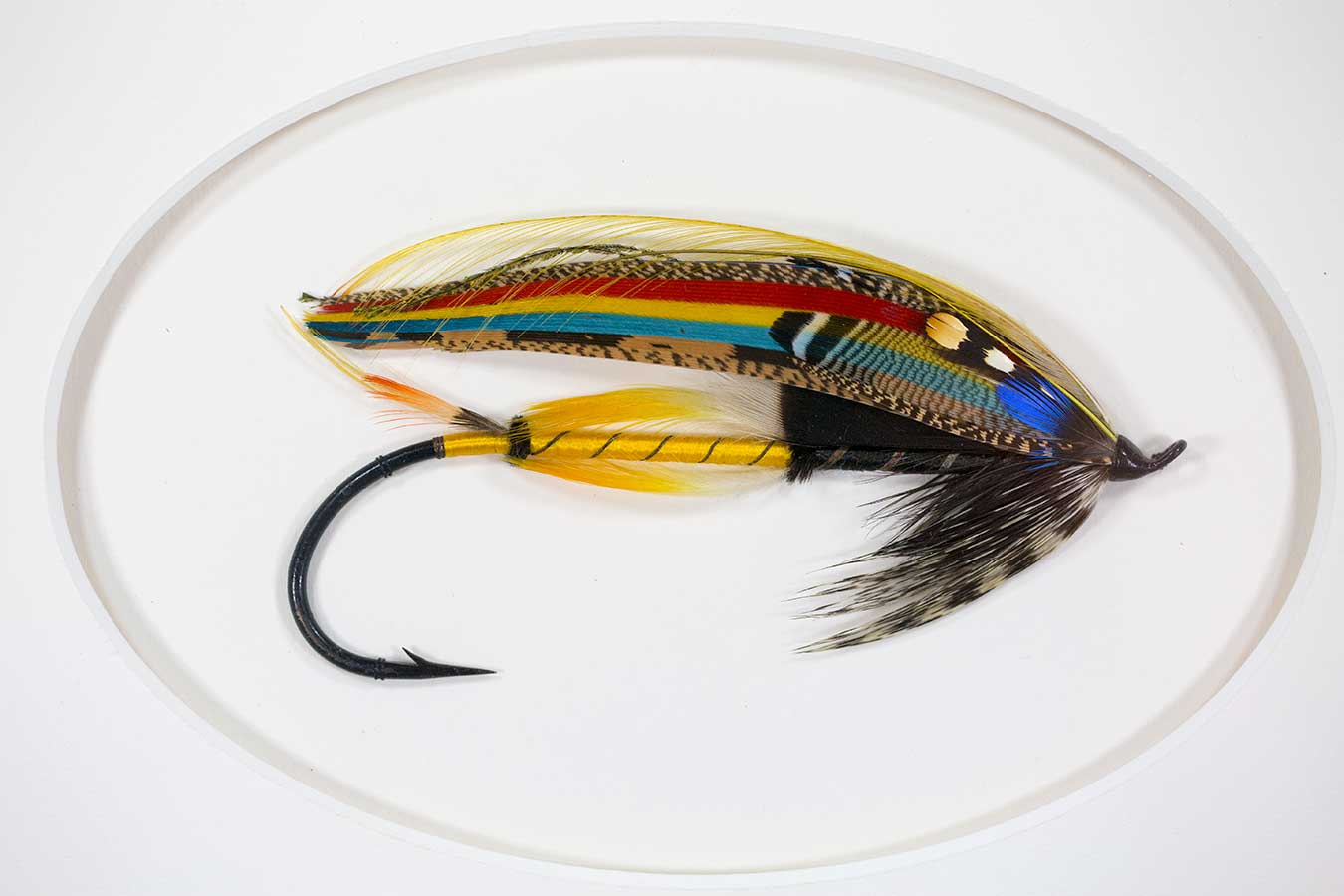
Megan Boyd Salmon Fly | photo by Steve Woit, from Fly Fishing Treasures book
It’s also interesting to see some of the early trade cards and catalogs that the fly fishing tackle houses used to promote their products. They contain a great deal of valuable information on different models and features of rods, reels, and accessories.
Here is a photo of one of the rarest early American color trade cards:
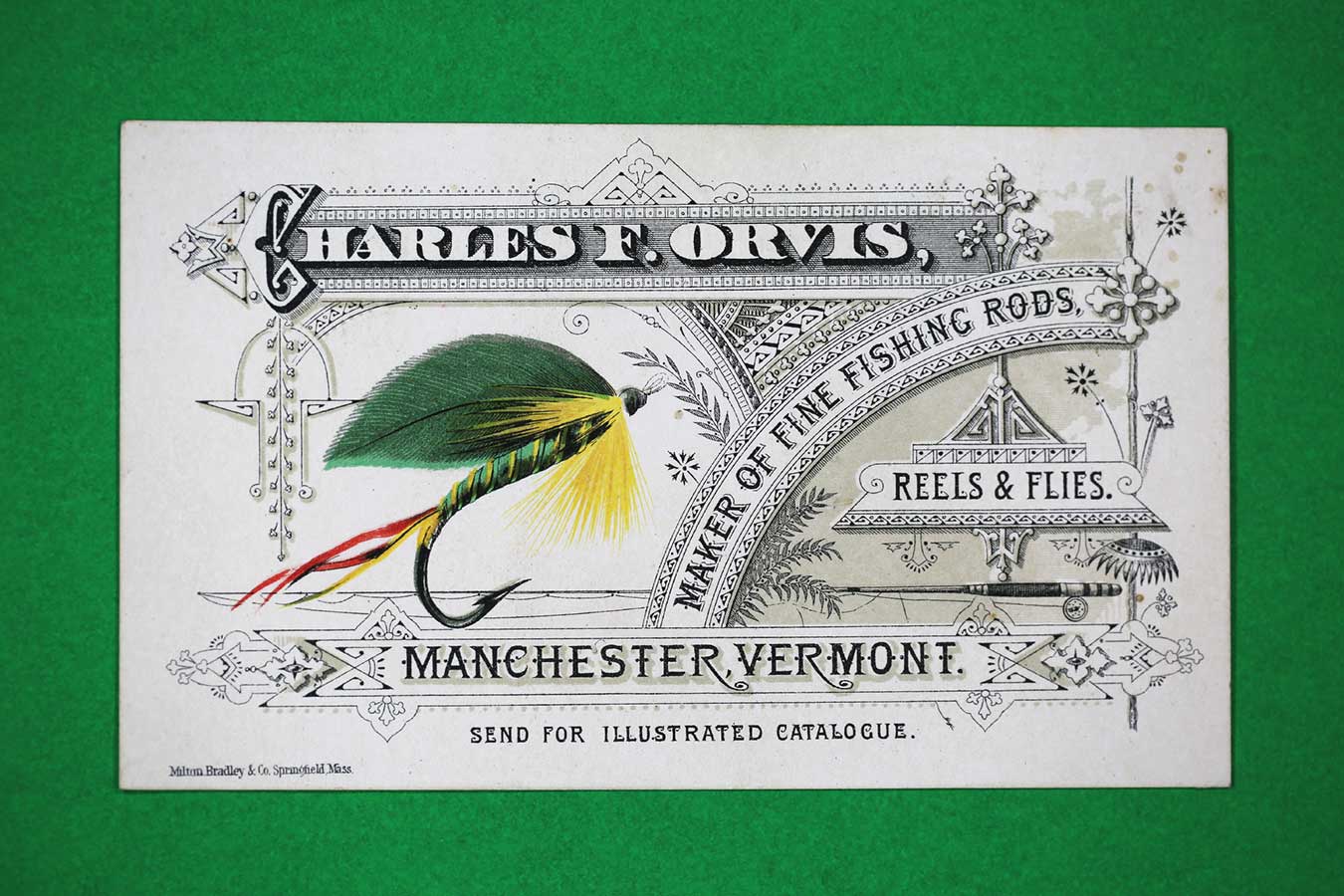
Early Orvis Color Trade Card
Last, but not least, the whole world of fly fishing accessories is a tiny world onto itself, with all kinds of small gizmos and do-dads—Just think of how many things like this you might have in your own fly vest.
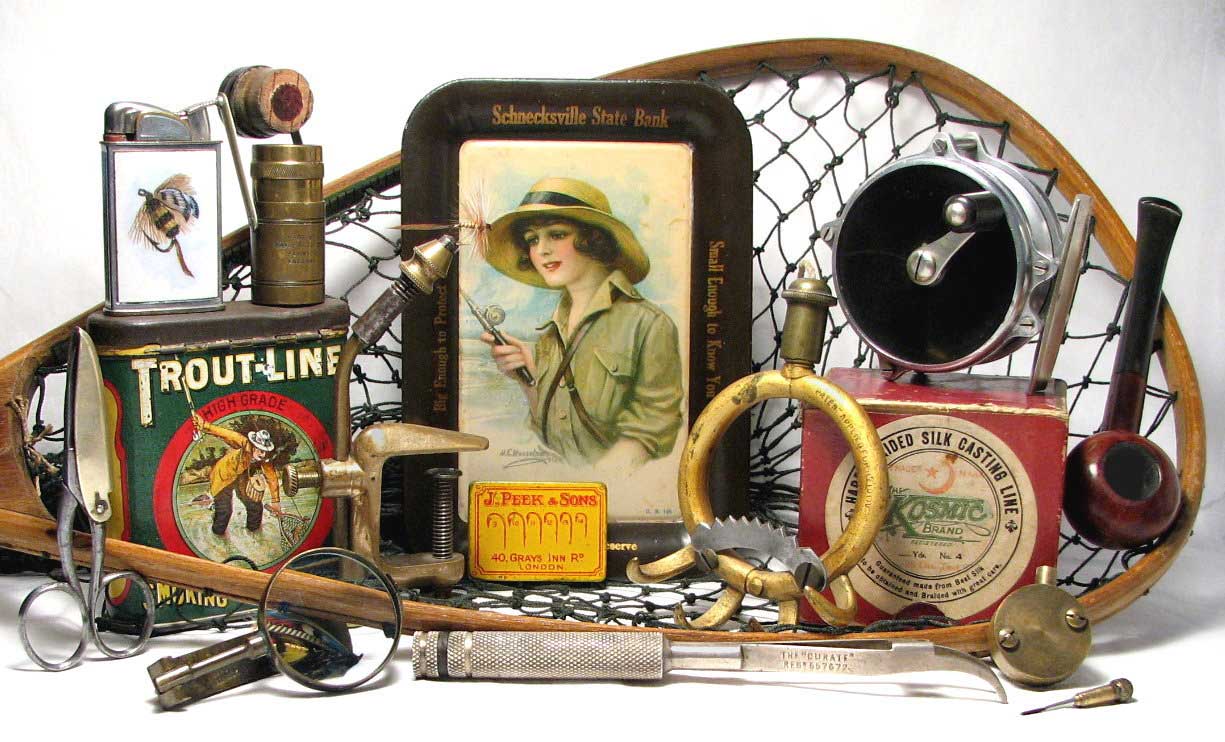
Fly Tackle Accessories | photo by Dean Smith, Tackle Treasures
So, every time we wonder about collectors and the future of collecting, I am reminded of all of the stories everyone tells me about their favorite rod, reel, or fly.
I can report that collecting in the fly tackle world is alive and well and likely to thrive as long as there is fly fishing and the memories that we cherish from our time on the water.
“The collector as I conceive him, has a double function. Sometimes he brings up out of the flood objects whose real beauty entitles them to the reprieve—things of intrinsic value.
But more often, his choicest spoils are such as in themselves have no claim to be rescued from the general doom, yet, for the sake of some man or some event whose memory has been preserved, inherit a worthy place in our regard.
We are grateful to the collectors, almost as to the historians, yet I cannot but wonder at them.”
–“Fishing Holidays” by Stephen Gwynn, 1904
More information on the book Fly Fishing Treasures can be found online at www.flyfishingtreasures.com.
